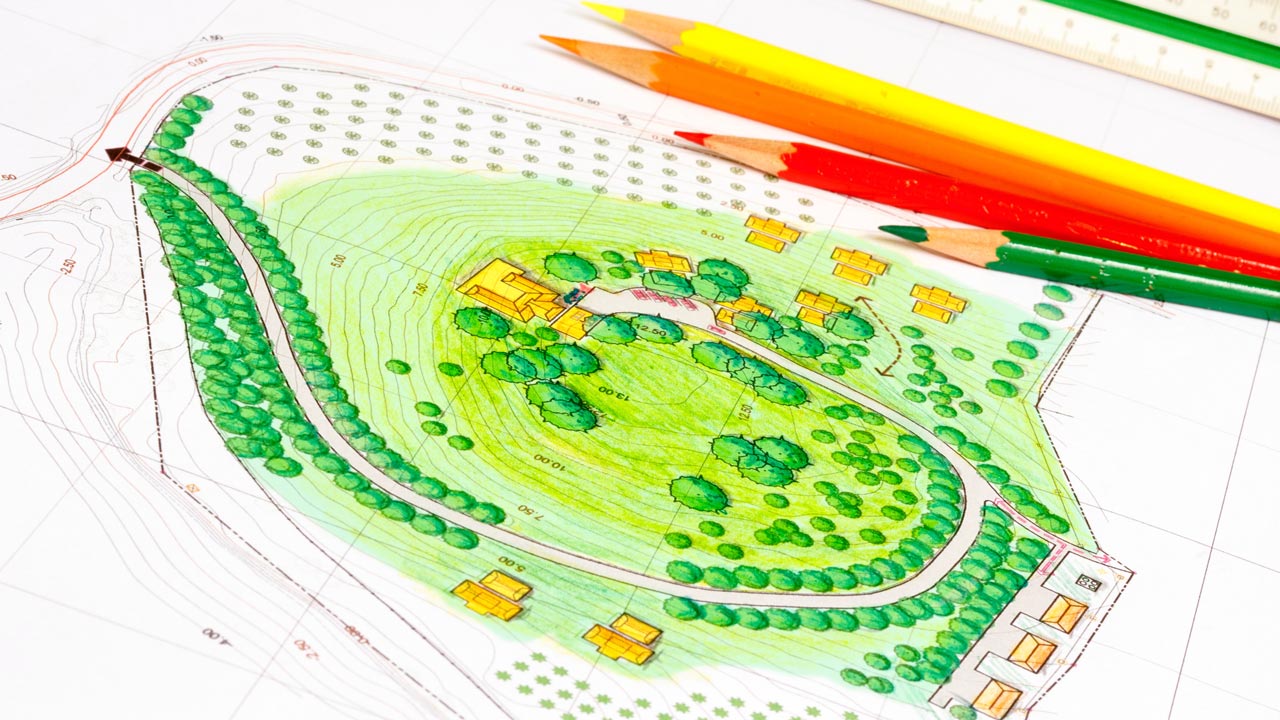
When asked, how do you create a successful garden? It is nearly impossible to provide a straightforward response because landscape design is such a vast topic. Like art, gardening can be extremely personal, subjective, and self-expressive.
Balance is crucial in landscape design but is frequently misunderstood. The two primary types of design balance are symmetrical balance and asymmetrical balance. Let's dive deeper into this.
We seek balance in everything we do and in our environment. We strive for a balanced diet, work-life balance, and balance in our relationships. But what role does balance play in our living environments and the garden?
The two most common types of balance are symmetrical and asymmetrical, but these are so general that they can only be described as overarching concepts.
Balance in the garden is attained when the space is harmonious, makes visitors feel at ease, and has sufficient visual appeal and variety. Layers of voids and masses, light and shade, enclosure and exposure, color, movement, and personality are all components of balance.
Formal gardensFormal gardens are highly structured, symmetrical landscapes that often feature geometric patterns, ... are where symmetry is most commonly found and recognized. Visibly defined geometric forms that are precisely aligned create a sense of stability and order. It often works best in large gardens with a picturesque setting—showcasing the human capacity to tame nature and bring order by arranging its unruly aspects.
A well-executed asymmetry is less noticeable to the observer and almost undetectable. Therefore, it is more challenging to define, as it strives to appear more natural and undisturbed.
The trees and paths winding throughout the garden may appear random at first glance, but they were strategically placed to create an asymmetrical balance. It creates the illusion that the garden has always been integral to the surrounding landscape.
Consider the act of weighing symmetry and asymmetry on a set of scales in order to visualize better how to achieve balance with them. To make this possible with symmetry, you should evenly distribute identical elements on both sides. With asymmetry, the opposite is true; you should envision a variety of objects balancing out two distinct sides.
Working with professional landscape designers to achieve the type of outdoor space you wish to have is a must.
It is challenging to imagine a home without several rooms. Each has a distinct function, which is separated by walls and doors. Similarly, a garden may be viewed in the same way.
Rooms in the garden are typically hard landscaped areas, such as terraces and paths, but can also include areas left unoccupied to allow for free movements, such as lawns or large water pools.
They promote exploration and offer options, allowing you to inhabit a space as you please. These voids can also be utilized to create vistas toward key garden elements.
Walls, also known as masses, are permanently occupied spaces containing objects or design elements. They may include pleached trees, planting, hedgesHedges are rows of closely planted shrubs or small trees that are trimmed to form a continuous barri..., sculptural elements, furniture, shrubs, and trees, as well as constructed forms.
By strategically placing elements in a garden, we create a balance between voids and masses, as well as between shaded and open spaces and enclosed and exposed spaces.
Most people enjoy the thought of sitting in the dappled shade of a large oak tree in an outdoor area. However, our feelings would change if we imagined the same tree growing in a small urban garden.
The same element, when placed in a different context, can elicit either feelings of empowerment or the exact opposite, feelings of being overwhelmed. To fully comprehend proportional balance, one must consider how each design element relates not only to its setting or one another but also to the human scale.
Gardens are also living and constantly changing, so the garden's balance evolves continuously. It could be as a result of plants growing taller than expected or self-seeding and outgrowing their spaces. These instances give us the chance to balance the garden better.
Finding balance in the garden is an ongoing process rather than a finished product.
For a custom landscape design that will make your outdoor area as balanced as you have in your mind, email us at info@westhillsmasonry.com or contact us at 714-519-5009 at West Hills Masonry today!
 Carlos Gonzales
Carlos GonzalesLocations We Serve
Schedule A Consultation